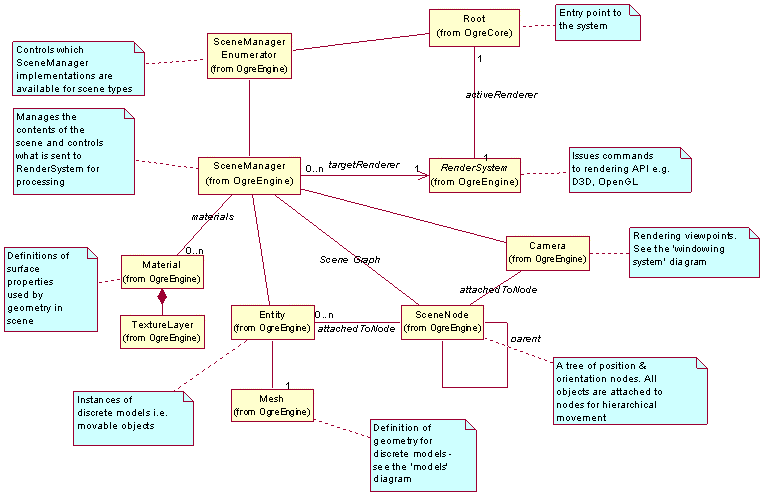
| [ < ] | [ Up ] | [ > ] | [Top] | [Contents] | [Index] | [ ? ] |
This tutorial gives you a quick summary of the core objects that you will use in OGRE and what they are used for.
OGRE uses a C++ feature called namespaces. This lets you put classes, enums, structures, anything really within a 'namespace' scope which is an easy way to prevent name clashes, i.e. situations where you have 2 things called the same thing. Since OGRE is designed to be used inside other applications, I wanted to be sure that name clashes would not be a problem. Some people prefix their classes/types with a short code because some compilers don't support namespaces, but I chose to use them because they are the 'right' way to do it. Sorry if you have a non-compliant compiler, but hey, the C++ standard has been defined for years, so compiler writers really have no excuse anymore. If your compiler doesn't support namespaces then it's probably because it's sh*t - get a better one. ;)
This means every class, type etc should be prefixed with 'Ogre::', e.g. 'Ogre::Camera', 'Ogre::Vector3' etc which means if elsewhere in your application you have used a Vector3 type you won't get name clashes. To avoid lots of extra typing you can add a 'using namespace Ogre;' statement to your code which means you don't have to type the 'Ogre::' prefix unless there is ambiguity (in the situation where you have another definition with the same name).
Shown below is a UML diagram of the core objects and how they relate to each other. Even if you don't know UML I'm sure you can work out the gist...

More details on these objects can be found in the following sections.
| [ < ] | [ Up ] | [ > ] | [Top] | [Contents] | [Index] | [ ? ] |